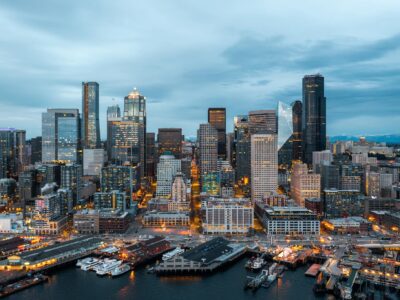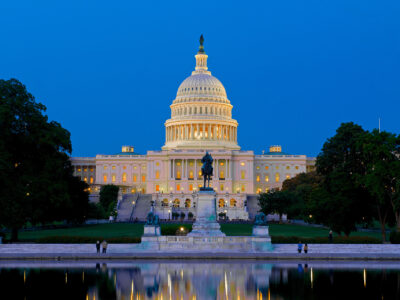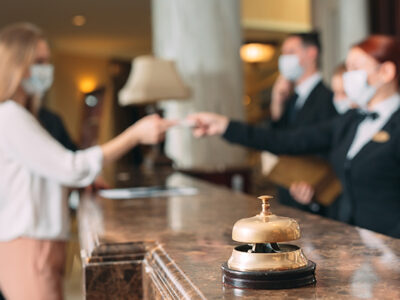
STR says that performance by Canadian hotels in June 2022 was the highest since the outbreak of the pandemic and its monthly hotel rates reached all-time high
Reports by hospitality data tracking and analysis company STR say that both Canada and the United States have registered extremely strong growth in demand, pointing to a sustained and robust recovery of the sector that had been hammered out of shape for over two years due to the Covid-19 pandemic and the ensuing travel disruptions.
STR says that the performance by Canadian hotels in June 2022 was the highest since the outbreak of the pandemic and its monthly hotel rates reached all-time high. Occupancy rate in June stood at 71.7 pc, just 2.8 pc lower than June 2019. The performance in terms of rates was even better, standing at CAD 197.87, almost 9 pc higher than in June 2019 and the highest rate ever for any June, says STR. The revenue per available room (RevPAR) was CAD 141.97, up 5.7 pc from June 2019. In addition to the highest ADR level on record, the June RevPAR level was the country’s highest since August 2019, while occupancy was its highest since September 2019.
“June was an exceptional month for Canada hotels, with RevPAR exceeding 2019 levels for the first time since the pandemic began, and, on nominal terms, reaching the highest level for any June on record,” says Laura Baxter, CoStar Group’s director of hospitality analytics for Canada. “Notably, the RevPAR index across all location types was over 100, including at airport and urban hotels, for the first time since the pandemic started,” Baxter says. “The main driver of the RevPAR recovery is still ADR, which has been higher than 2019 levels for four consecutive months. Meanwhile, occupancy remains slightly below the pre-pandemic comparable, as a small gap in group and weekday demand is holding back the metric from full recovery. Despite the deficit, the rebound in group demand is also going from strength to strength, reaching 2.5 million room nights in June, up from 2.9 million in June 2019. Group ADR also exceeded 2019 for the first time. Although group demand is expected to fall in line with seasonal trends over the remainder of the summer, it will play a pivotal role in the fall and spring if momentum from leisure demand fades,” says Baxter.
Among the provinces and territories, Nova Scotia recorded the highest June occupancy level at 79.7 pc, which was 5.5 pc above the pre-pandemic comparable. Among the major markets, Toronto saw the highest occupancy 84.4 pc, which was a 0.9 pc increase from 2019. The lowest occupancy among provinces was reported in Alberta 62.1 pc, down 2.1 pc against 2019.
While the data is positive, not all developments in Canada favour a continued recovery, warns STR, pointing at recent re-instatement of some restrictions on international travellers arriving in Canada. “The most recent data from Statistics Canada shows that international visitor numbers are well above 2021 levels but remain less than half of 2019 at 47 pc, suggesting a huge opportunity for hoteliers to benefit from more international visitation,” Baxter said. “In mid-July, however, random testing for fully vaccinated inbound air travelers resumed, adding to the hassle of crossing the Canadian border. This change will likely add downward pressure to international demand recovery. Thankfully, the domestic market will keep hotel demand strong for the remainder of the summer, and anecdotal evidence suggests that the booking pace is strong into September. However, with rising interest rates and costs, discretionary spending from domestic leisure travelers will likely be increasingly scrutinised in Q4 2022 and Q1 2023. At that time, international hotel demand recovery, and other lagging segments, will be even more critical to replace any drop off in demand from the leisure segment, which has led the recovery thus far,” says Baxter.
US hotels exceed pre-pandemic business
A report by STR on the US hotel room demand for the week ending July 23, reached its seasonal apex with more than 28.4 million sold. That was the country’s highest weekly total for rooms sold since mid-2019 and the 10th largest weekly amount of the past 22 years.
STR says that the demand peak was expected as the same week (Week 30 of the calendar year) has been the week with the highest demand in the whole year for 15 of the past 22 years. Though demand in Week 30 of 2022 was strong, the top position has remained with 2019 which saw 29.4 million rooms sold.
Occupancy also reached a pandemic-era high of 72.8 pc, which was the highest level since early August 2019. Nominal average daily rate (ADR) continued its growth, though rising by 1 pc in the week to USD 158.79, making it the second highest nominal level recorded by STR since 2000, and USD 0.69 below the record seen at the beginning of the year. Nominal ADR was up 16 pc over the comparable week in 2019 and 11 pc year over year. At USD 115.59, nominal revenue per available room (RevPAR) advanced to the highest weekly level ever recorded by STR, rising by 2 pc week over week and 13 pc year on year. As compared with 2019, weekly nominal RevPAR was 9 pc higher, says STR.
Within the US, 21 cities saw their highest demand levels of the pandemic-era including Charlotte, Los Angeles, San Jose, and Portland in Oregon, says STR. Additionally, six markets, mostly smaller like Portland, ME, but including Charlotte, reached an all-time record high for weekly demand. While most markets did not surpass previous weekly highs, demand strength this week was widespread leading to impressive occupancy levels. Alaska once again led all STR-defined markets with the highest weekly occupancy of 92 pc.
Upscale and Upper-Midscale hotels continued to excel with both chain scales reporting their highest weekly demand ever. Upper-Midscale surpassed the record demand set just a week ago. One third of all rooms sold this week among branded hotels were in Upper Midscale properties, where demand was 6.3 million. Upscale saw demand of 4.8 million, says STR.





















